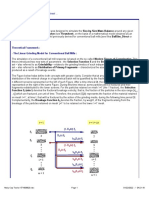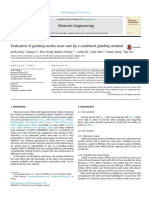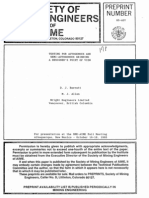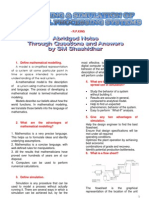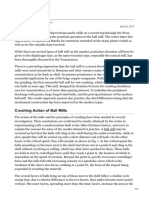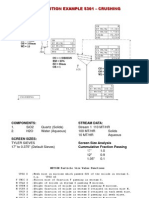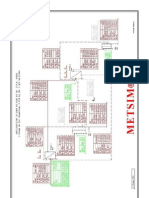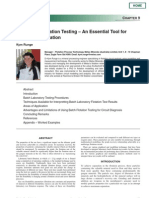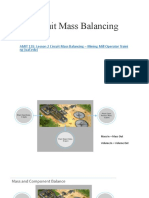0% found this document useful (0 votes)
778 views2 pagesCirculating Load Ratio
The document discusses how to calculate the circulating load ratio for a ball mill circuit using size distribution data. The circulating load ratio is defined as the ratio of the total amount of solids passing through the ball mill to the amount passing through the entire circuit. It can be determined by A) calculating the amount of new product generated by the entire circuit, and B) calculating the amount generated during each pass through the ball mill, then taking the ratio of A/B. An example calculation is provided using data for 75 micrometer screen size that results in a circulating load ratio of 3.0 or 300%.
Uploaded by
minerales&materialesCopyright
© © All Rights Reserved
We take content rights seriously. If you suspect this is your content, claim it here.
Available Formats
Download as PDF, TXT or read online on Scribd
0% found this document useful (0 votes)
778 views2 pagesCirculating Load Ratio
The document discusses how to calculate the circulating load ratio for a ball mill circuit using size distribution data. The circulating load ratio is defined as the ratio of the total amount of solids passing through the ball mill to the amount passing through the entire circuit. It can be determined by A) calculating the amount of new product generated by the entire circuit, and B) calculating the amount generated during each pass through the ball mill, then taking the ratio of A/B. An example calculation is provided using data for 75 micrometer screen size that results in a circulating load ratio of 3.0 or 300%.
Uploaded by
minerales&materialesCopyright
© © All Rights Reserved
We take content rights seriously. If you suspect this is your content, claim it here.
Available Formats
Download as PDF, TXT or read online on Scribd
/ 2





